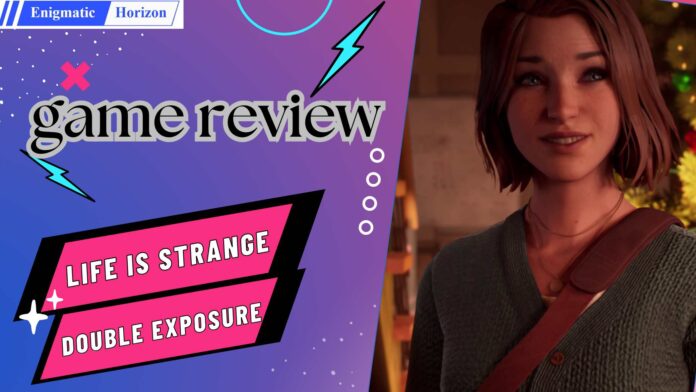Robin Bhuyan
Released on October 29, 2024, by Square Enix, Life is Strange: Double Exposure is the latest addition to the popular Life is Strange series. The series began in 2015, and over the years, it has built a strong fanbase due its impactful and emotional storytelling with supernatural themes. The latest installment reintroduces Max Caulfield, the original protagonist, now an award-winning photographer and teacher at Caledon University. Set against the atmospheric, snow-covered campus in Vermont, Double Exposure lets us play as a more mature Max who still grapples with the traumatic events of Arcadia Bay and the weight of her past decisions.
The story begins as a murder mystery surrounding Max’s closest friend, Safi, who is killed within the first thirty minutes of the game. In the first three episodes, you could say the game delivers on its promise- pulling players into an intriguing murder investigation with unique gameplay mechanics. Max’s new “Shift” power allows her to navigate between two timelines—one in which Safi is alive and the other where she’s been murdered. This dual-timeline concept is something new which we probably have not seen in any mainstream games before, and it definitely opens up interesting puzzle dynamics, forcing players to switch back and forth to uncover clues and understand the motivations of a diverse cast.

However, while the initial three chapters are interesting and promising, the real story begins to unravel after the third chapter ends. Up to that point, Double Exposure follows a clear murder mystery structure, encouraging players to piece together Safi’s backstory and motives of different characters by exploring two different timelines. Unfortunately, as the story goes to the fourth chapter, it diverges from its original mystery angle, becoming a confusing mix of plot twists that are hard to make sense of. By the end, it’s hard to tell what the game is trying to say, leading to frustration and a sense that the story has lost its way. You can choose to call this confusion as “emotional superposition,” a term that encapsulates the muddled feelings players might have about the story’s progression and Max’s journey.
Gameplay-wise, the Shift mechanic is a refreshing departure from Max’s original rewind power, which in the first game felt more like “glorified trial and error.” In Double Exposure, the puzzles require more critical thinking, as players have to make judgment calls about which timeline holds the information or objects needed to proceed. This makes for a more active experience, and the two timelines—with one mourning Safi’s death and the other continuing as usual—create an interesting contrast that adds depth to interactions with characters. Unfortunately, while the Shift power initially feels exciting, it doesn’t fully make up for the multiple shortcomings in the story of the game.
On a personal note, the forced inclusion of certain elements, such as LGBT characters, felt more like a checkbox rather than an organic part of the story. While inclusivity is important, it should feel authentic and serve the narrative, not forced down the throat of players and audiences. This forced integration makes no sense, and neither does the romantic subplots as they only detract from the main story, which was already struggling as it is.
Visually, Double Exposure deserves some praise. The game maintains the distinct, watercolor-inspired aesthetic that Life is Strange is known for, and the environments of Caledon University are beautifully designed. But it’s disappointing that a game marketed as a murder mystery would abandon its core premise halfway through. The game ends up leaving players more confused than captivated, with a plot that feels incomplete and ideas that are underdeveloped.

In summary, Life is Strange: Double Exposure starts strong but the game fails to keep its momentum in later chapters, leaving fans with an experience that feels both familiar and frustratingly scattered. While the new Shift mechanic is a undoubtedly a clever part of the game, the inconsistent storytelling and poorly integrated elements make this a big letdown for fans of the first game and those who are expecting a cohesive, engaging narrative. Overall, it’s hard to recommend Double Exposure to players, unless the visuals are the only thing you are looking for in a game!
Rating : 4 out 10 stars
